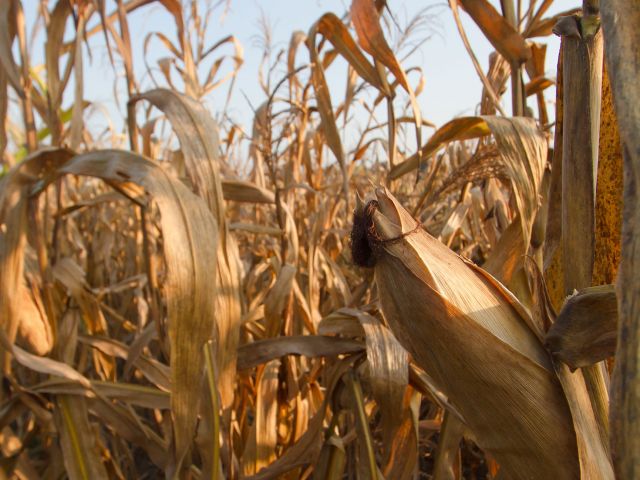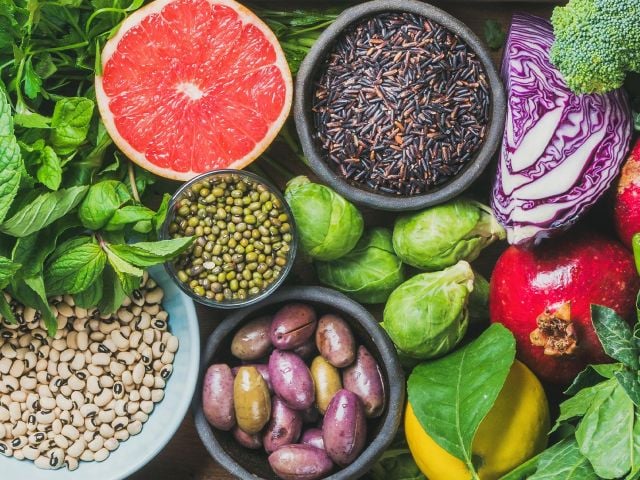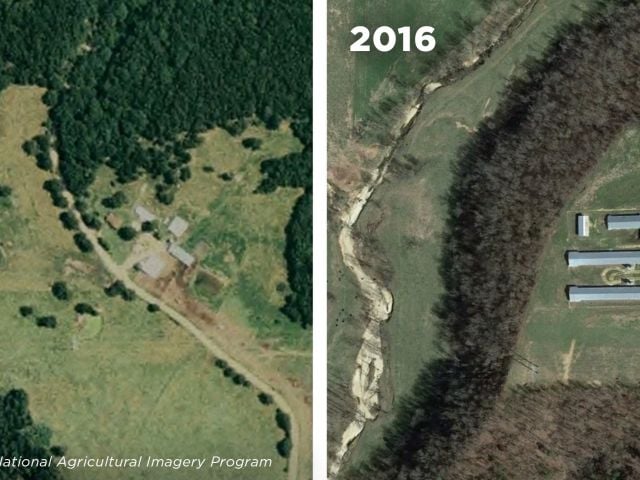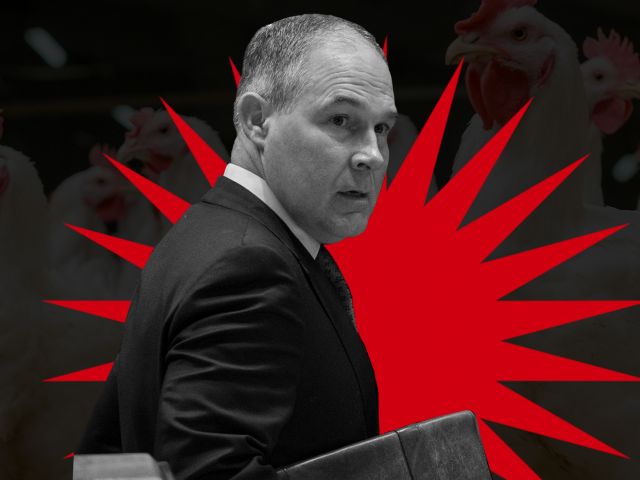Displaying 1489 - 1512 of 7455
Research
BPA in Canned Food
You may know that bisphenol A, a synthetic estrogen found in the epoxy coatings of food cans, has been linked to many health problems. Many companies have publicly pledged to stop using BPA in their cans. But consumers like you have had no way to know which canned foods use BPA-based epoxy. Until now. EWG analyzed 252 canned food brands, mostly between January and August 2014, to find out which of

Research
Toxic Stew
Wastewater from hydraulic fracturing of oil and gas wells in California is heavily contaminated with a toxic stew of chemicals known to cause cancer or reproductive harm, an analysis by Environmental Working Group shows.

Research
Iowa's Low Hanging Fruit
A study of five representative Iowa counties shows that requiring simple buffer zones between crop fields and streams could get two-thirds of the way to the state's goal for reducing phosphorus pollution and one-fifth of the way to the nitrogen pollution target, while affecting only a tiny proportion of landowners and a vanishingly small percentage of row-crop acreage.

Research
“Washout” Revisited
In 2013, an Environmental Working Group report titled “WASHOUT” documented that soil erosion across Iowa farm land during that spring's heavy rains had been far worse than previous estimates – in some cases carrying away a devastating 40 tons of soil in a single week from fragile and poorly protected fields. In many places, runoff carved “ephemeral gullies” as a result of growers' inadequate

Research
Broken Stream Banks
Water pollution from farmland is a major problem in southern Minnesota and wherever row crops dominate the landscape across the United States. Much of this pollution can be prevented by the conscientious use of riparian buffers – strips of grass, trees or other permanent vegetation maintained along the banks of rivers, streams, lakes and other waterways.

Research
Nearly 500 ways to make a yoga mat sandwich
If you've planked on a yoga mat, slipped on flip-flops, extracted a cell phone from protective padding or lined an attic with foam insulation, chances are you've had a brush with an industrial chemical called azodicarbonamide, nicknamed ADA. In the plastics industry, ADA is the “chemical foaming agent” of choice. It is mixed into polymer plastic gel to generate tiny gas bubbles, something like

Consumer Guides
EWG’s 2014 Shopper’s Guide To Avoiding GMO Food
Consumers have the right to know if their food has been genetically modified. However, the U.S. government does not require labeling of GE foods or ingredients so that shoppers can make informed decisions.

Research
Cutting Waste in the Crop Insurance Program
Congress could dramatically cut spending on the federal crop insurance program without sacrificing anything other than the political objective of propping up a crop insurance industry that only exists because of taxpayer support. Cutting this spending would not necessarily mean providing farmers with less money, because the freed-up funds could be spent on programs that benefit both farmers and

Consumer Guides
EWG’s guide to endocrine disruptors
Endocrine disruptors are natural or synthetic chemicals that can disrupt the hormone system in many ways – increasing the production of some hormones, decreasing the production of others and interfering with their signaling, which can result in health problems.

Research
Exposing the Cosmetics Cover-up
At EWG, we know how much you care about the safety of personal care products. Over the next several weeks we will delve deeper into some of the crucial issues surrounding these products. EWG's investigative series, "Exposing the Cosmetics Cover-Up," will take on a wide range of topics that should be on the minds of everyone who uses a personal care product. As EWG has long known — and as leading

Research
Pumped Up
Supporters of the House and Senate versions of the stalled farm bill are arguing that they represent historic reform because both would replace Direct Payments with a suite of new subsidies designed to cover “losses” too small to be compensated even by the over-generous crop insurance program.

Research
BB and CC Creams
“Skin Perfector.” “Balance, brighten, renew and protect.” “Anti-aging.” The ads sound too good to be true. BB (stands for beauty balm) and CC (stands for color corrector or complexion corrector) creams claim to be all-in-one moisturizer, concealer, foundation and sometimes sunscreen.

Consumer Guides
Five Reasons to Skip Bottled Water
Over the course of a week, EWG highlights five important reasons to skip bottled water and opt for filtered tap water instead.

Research
Report: Up to 110 Million Americans Could Have PFAS-Contaminated Drinking Water
More than 1,500 drinking water systems across the country may be contaminated with the nonstick chemicals PFOA and PFOS, and similar fluorine-based chemicals, a new EWG analysis shows.

Research
Case Study: Corn Belt Communities Plagued by Nitrate in Tap Water
In December 2015, the 1,500 residents of Erie, Ill., received a warning that the community's tap water should not be given to babies under 6 months old, or used to mix formula or juice for those infants.

Research
Update: Mapping the Expanding PFAS Crisis
The latest update of an interactive map by EWG and the Social Science Environmental Health Research Institute at Northeastern University documents publicly known PFAS pollution from 94 sites in 22 states, including industrial plants and dumps, military air bases, civilian airports and fire training sites. It also shows PFAS pollution of tap water for 16 million people in 33 states and Puerto Rico.

Research
Double Dipping: How Taxpayers Subsidize Farmers Twice for Crop Losses
After a decline in crop prices in 2014 and 2015, the U.S. Department of Agriculture boosted farmers' income by more than $13 billion through two newly enacted subsidy programs. But during the same period, another USDA program paid out nearly as much to “compensate” the same farmers for the same decline in prices. In all, this double-dipping cost American taxpayers almost $23.9 billion.

Research
Organic Within Reach
With a little planning, cooking organic food can save money and time, help you eat better, cut down on waste and help protect the environment.

Research
Growing Organic
In less than two decades, sales in the organic sector have grown from $3.7 billion in 1997 to more than $43 billion in 2015.

Research
Mapping Cover Crops on Corn and Soybeans in Illinois, Indiana and Iowa, 2015-2016
Mapping Cover Crops on Corn and Soybeans in Illinois, Indiana and Iowa, 2015-2016

Research
EWG Investigates: Pruitt’s Toothless Poultry Law
Scott Pruitt, President Trump's nominee to lead the Environmental Protection Agency, has a penchant for making misleading claims about his record on the environment.

Research
EWG Investigates: Scott Pruitt and Poultry Pollution
As Oklahoma's attorney general, Scott Pruitt rolled back efforts to protect the waters of his home state from the poultry industry and other polluters.

Research
Exposing Fields of Filth in North Carolina
North Carolina boasts the nation's second biggest hog farming industry, worth $3 billion in hog and pig sales in 2012 alone, according to the U.S. Department of Agriculture. It ranks third among the states for poultry production.

Research
Mercury in Seafood
In 2014, federal agencies issued draft recommendations that women who are pregnant, breastfeeding or might become pregnant and young children eat more fish that is lower in mercury. Their advice is based on the fact that seafood consumption is an excellent source of omega-3 fatty acids and other nutrients.
